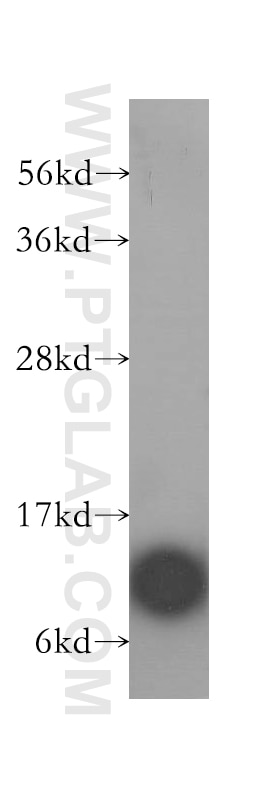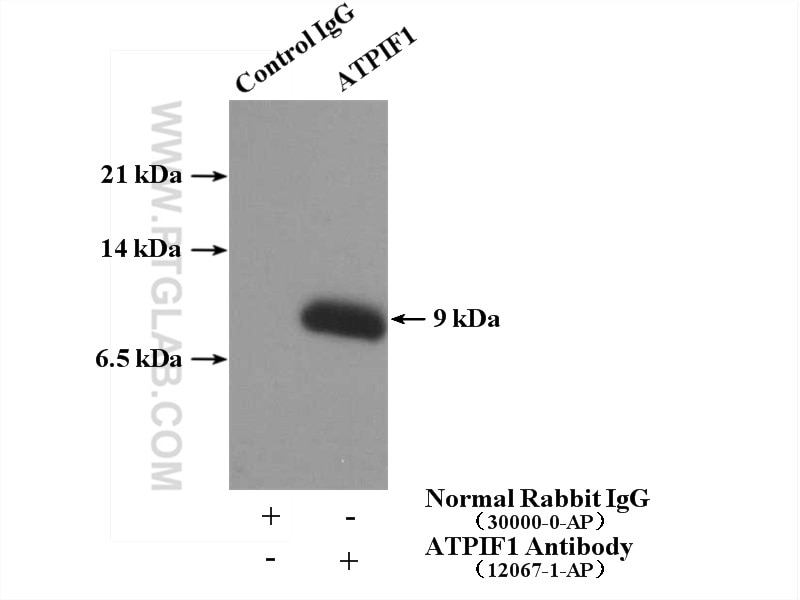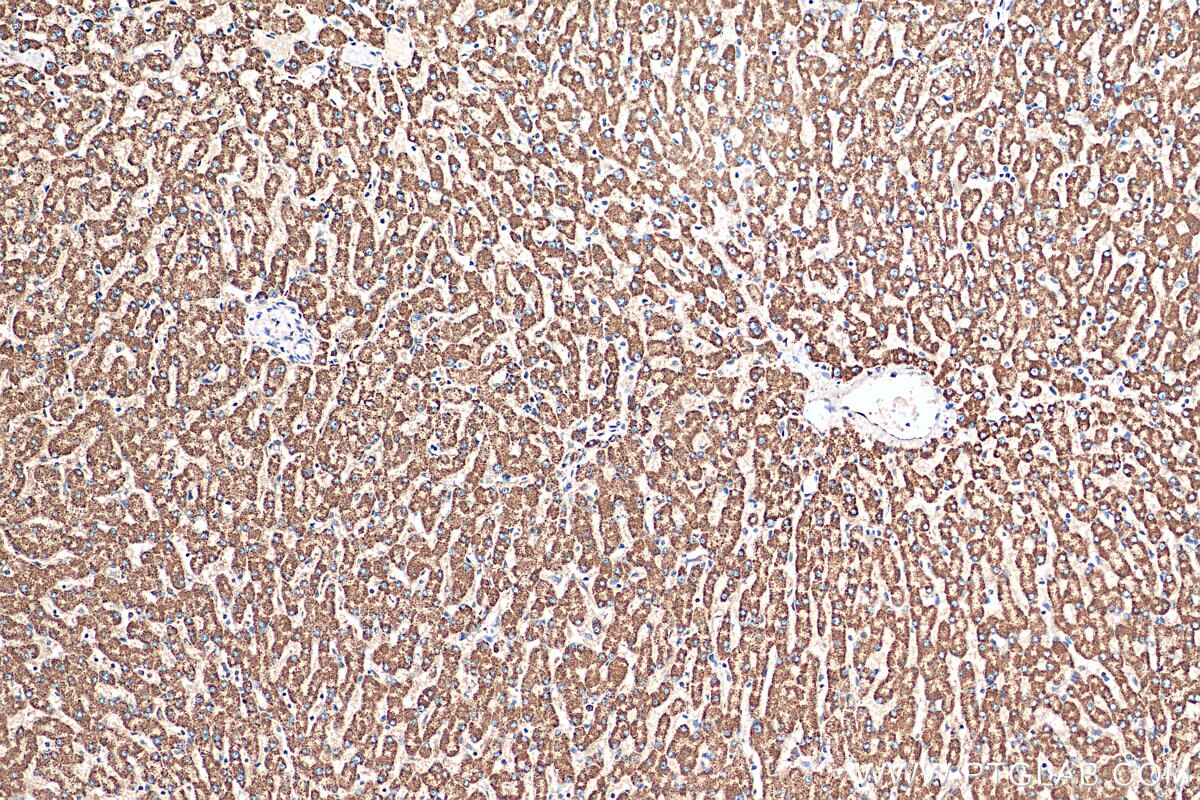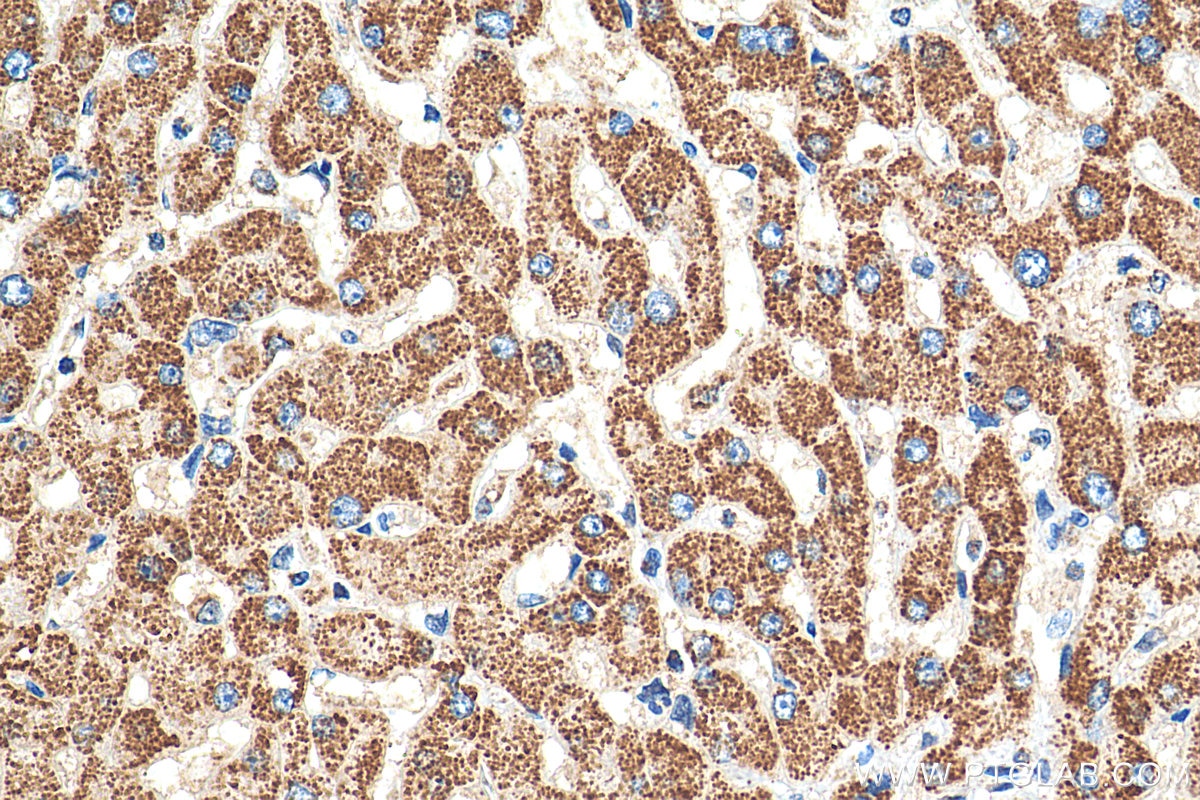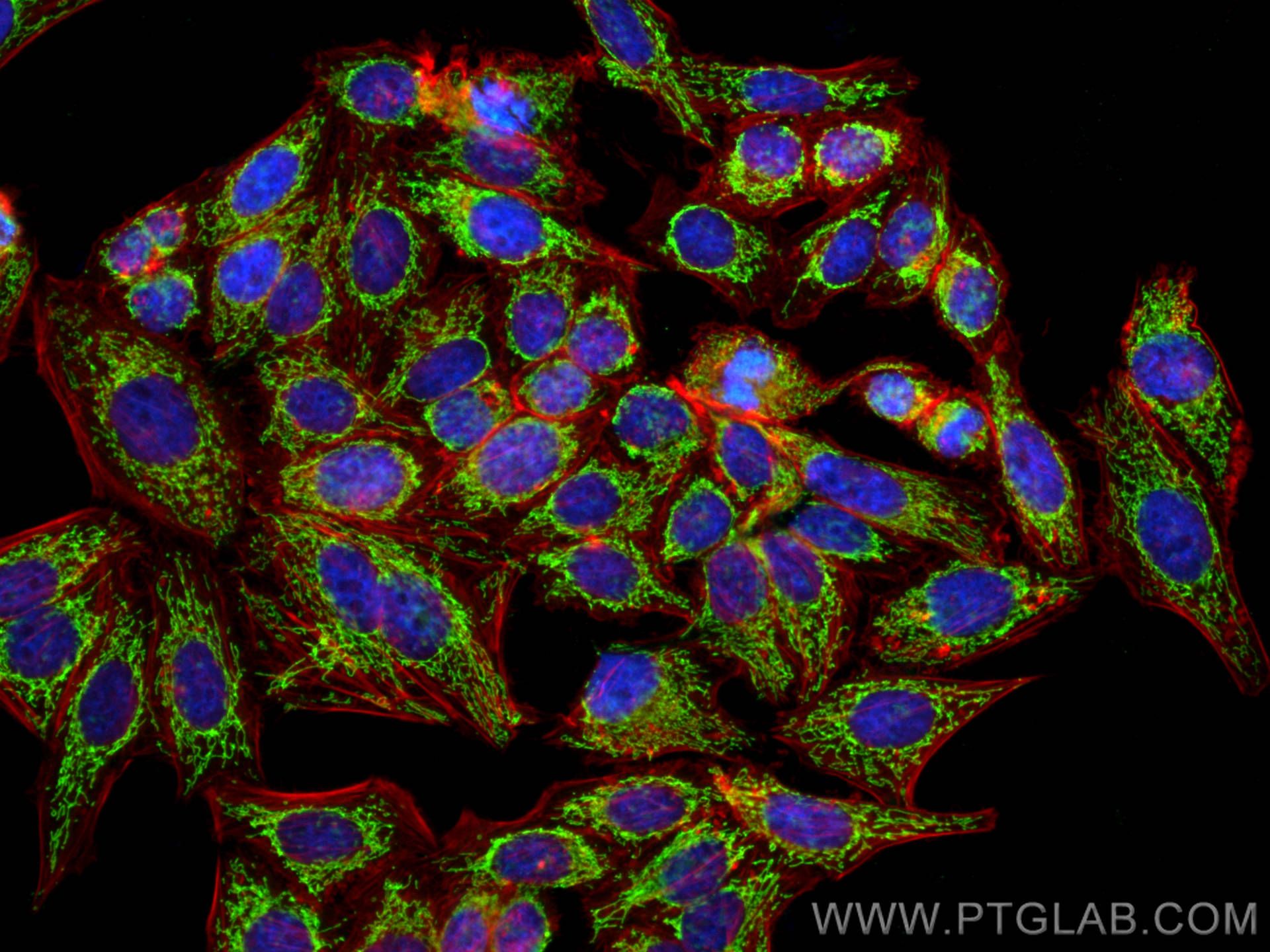- Featured Product
- KD/KO Validated
ATPIF1 Polyklonaler Antikörper
ATPIF1 Polyklonal Antikörper für WB, IHC, IF/ICC, IP, ELISA
Wirt / Isotyp
Kaninchen / IgG
Getestete Reaktivität
human
Anwendung
WB, IHC, IF/ICC, IP, ELISA
Konjugation
Unkonjugiert
Kat-Nr. : 12067-1-AP
Synonyme
Geprüfte Anwendungen
| Erfolgreiche Detektion in WB | HeLa-Zellen |
| Erfolgreiche IP | HeLa-Zellen |
| Erfolgreiche Detektion in IHC | humanes Lebergewebe Hinweis: Antigendemaskierung mit TE-Puffer pH 9,0 empfohlen. (*) Wahlweise kann die Antigendemaskierung auch mit Citratpuffer pH 6,0 erfolgen. |
| Erfolgreiche Detektion in IF/ICC | HepG2-Zellen |
Empfohlene Verdünnung
| Anwendung | Verdünnung |
|---|---|
| Western Blot (WB) | WB : 1:500-1:2400 |
| Immunpräzipitation (IP) | IP : 0.5-4.0 ug for 1.0-3.0 mg of total protein lysate |
| Immunhistochemie (IHC) | IHC : 1:50-1:500 |
| Immunfluoreszenz (IF)/ICC | IF/ICC : 1:50-1:500 |
| It is recommended that this reagent should be titrated in each testing system to obtain optimal results. | |
| Sample-dependent, check data in validation data gallery | |
Veröffentlichte Anwendungen
| KD/KO | See 4 publications below |
| WB | See 6 publications below |
| IHC | See 1 publications below |
| IF | See 7 publications below |
Produktinformation
12067-1-AP bindet in WB, IHC, IF/ICC, IP, ELISA ATPIF1 und zeigt Reaktivität mit human
| Getestete Reaktivität | human |
| In Publikationen genannte Reaktivität | human |
| Wirt / Isotyp | Kaninchen / IgG |
| Klonalität | Polyklonal |
| Typ | Antikörper |
| Immunogen | ATPIF1 fusion protein Ag2704 |
| Vollständiger Name | ATPase inhibitory factor 1 |
| Berechnetes Molekulargewicht | 106 aa, 12 kDa |
| Beobachtetes Molekulargewicht | 12 kDa |
| GenBank-Zugangsnummer | BC009677 |
| Gene symbol | ATPIF1 |
| Gene ID (NCBI) | 93974 |
| Konjugation | Unkonjugiert |
| Form | Liquid |
| Reinigungsmethode | Antigen-Affinitätsreinigung |
| Lagerungspuffer | PBS with 0.02% sodium azide and 50% glycerol |
| Lagerungsbedingungen | Bei -20°C lagern. Nach dem Versand ein Jahr lang stabil Aliquotieren ist bei -20oC Lagerung nicht notwendig. 20ul Größen enthalten 0,1% BSA. |
Hintergrundinformationen
The H(+)-ATP synthase is a reversible engine of mitochondria that synthesizes or hydrolyzes ATP upon changes in cell physiology. ATP synthase dysfunction is involved in the onset and progression of diverse human pathologies. ATPIF1 gene encodes mitochondrial ATPase Inhibitory Factor 1 (IF1), also named ATPI, ATPIP or IP. Endogenous IF1 limits ATP depletion when the mitochondrial membrane potential falls below a threshold and the ATP synthase starts hydrolyzing ATP to pump protons out of the mitochondrial matrix. Mitochondrial content of IF1 controls the activity of oxidative phosphorylation mediating the shift of cancer cells to an enhanced aerobic glycolysis, thus supporting an oncogenic role of IF1 in cancer.
Protokolle
| PRODUKTSPEZIFISCHE PROTOKOLLE | |
|---|---|
| WB protocol for ATPIF1 antibody 12067-1-AP | Protokoll herunterladen |
| IHC protocol for ATPIF1 antibody 12067-1-AP | Protokoll herunterladenl |
| IF protocol for ATPIF1 antibody 12067-1-AP | Protokoll herunterladen |
| IP protocol for ATPIF1 antibody 12067-1-AP | Protokoll herunterladen |
| STANDARD-PROTOKOLLE | |
|---|---|
| Klicken Sie hier, um unsere Standardprotokolle anzuzeigen |
Publikationen
| Species | Application | Title |
|---|---|---|
Nat Biotechnol Magnify is a universal molecular anchoring strategy for expansion microscopy | ||
Br J Pharmacol The compound BTB06584 is an IF1 -dependent selective inhibitor of the mitochondrial F1 Fo-ATPase. | ||
Cell Biosci ATPIF1 maintains normal mitochondrial structure which is impaired by CCM3 deficiency in endothelial cells. | ||
Lab Invest ATP synthase inhibitory factor subunit 1 regulates islet β-cell function via repression of mitochondrial homeostasis
| ||
Lab Invest ATP synthase inhibitory factor subunit 1 regulates islet β-cell function via repression of mitochondrial homeostasis.
| ||
Front Physiol F1F0-ATP Synthase Inhibitory Factor 1 in the Normal Pancreas and in Pancreatic Ductal Adenocarcinoma: Effects on Bioenergetics, Invasion and Proliferation. |
